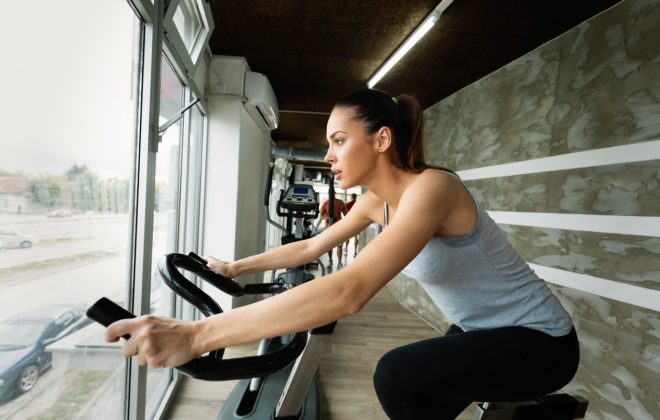Breathing and resistance training
In resistance training it is essential to perform exercises by using proper movement techniques and breathing pattern. This is especially needed in more complex exercises such as squats, dead lifts, bench press and Olympic weightlifting (snatch, clean and yerk). In this text we will describe the mechanism and the importance of breathing when exercising with weights and give some advices.
THE ROLE AND IMPORTANCE OF BREATHING
The aim of breathing when lifting weights is to create pressure in the thoracic cavity to stabilize the spine. When lifting weights a large load is put on the spine. The muscles surrounding the spine stabilize it and receive help from pressure in the abdominal cavity (lumbar spine). That pressure can’t be held all the time because breathing in needed.
Breathing also helps with the rhythm of performing exercises. Breathing control allows us to make a certain number of repetitions to exhaustion. Weight exercises are mostly done by utilizing anaerobic energy sources (especially when it comes to high weights and a small number of repetitions) which tells us that the need for oxygen is not the same as in some cyclical activities such as running or cycling. Thus, breathing needs to be different.
If we hold our breath for too long when lifting weights or breathe in an irregular way dizziness or fainting may occur, as the brain blood supply decreases.
According to Vorobjev, muscular contractions are stronger if we hold our breath. He explains that tension is closely associated with breathing and positively affects strength of skeletal muscles.
Tension is the result of increased pressure in the chest and abdominal cavity. Specifically, the mechanoreceptors found in the thoracic and abdominal cavity tell the central nervous system that pressure has increased. The central nervous system responds to this by sending impulses to increase the tension of skeletal muscles thereby enhancing the contraction of the muscles.
All this has a positive effect on stability when performing exercises. It is especially evident when the back squat is performed where static contraction of the lower back becomes more powerful which supports spine and makes exercise safer.


VALSALVA BREATHING TECHNIQUE
Valsalva breathing technique is based on exhalation through closed vocal cords. It is performed in a way to make a deep breath, close the vocal cords and then try to exhale. Although this method of breathing may increase systolic blood pressure, there are certain advantages of this way of breathing when lifting weights. It improves performance, yet certain authors consider this way of breathing dangerous due to the possibility of damaging the cardiovascular system. The latest research has shown that Valsalva breathing increases the pressure in the cervical area, the chest and abdominal cavity, and the increase in systolic blood pressure is eliminated by pressure in the cervical area.
Some authors favor using this breathing mode, while others are strictly against. It should be used by experienced trainers who know how to properly use it (especially athletes in power sports e.g. powerlifting), while beginners should avoid it (they do not work with heavy loads anyway). Best of all is the method used by some trainers and they call it the partial Valsalva method. It is made by exhaling in the last third of every repetition. In this way, all the benefits of Valsalva breathing are used while unwanted effects reduced.
BREATHING IN EXERCISES
First task is to teach resistance training beginners how to breathe. This is accomplished by training with small weights, proper exercise technique, knowledge of eccentric and concentric part of movement, and breathing during these phases. Beginners often replace the two parts and breathe wrong. In some exercises such as sit-ups the compression in the thoracic cavity is not desirable because it stabilizes the spine and this exercise requires spine to be mobile. For this reason, it is good to make a complete exhalation and then trunk flexion.
This should be also done in back extension, i.e. we should determine whether we want to have stable trunk and isometrically contract trunk extensors (e.g. in squats) or we want concentric and eccentric contraction as in the back extension on the bench.




